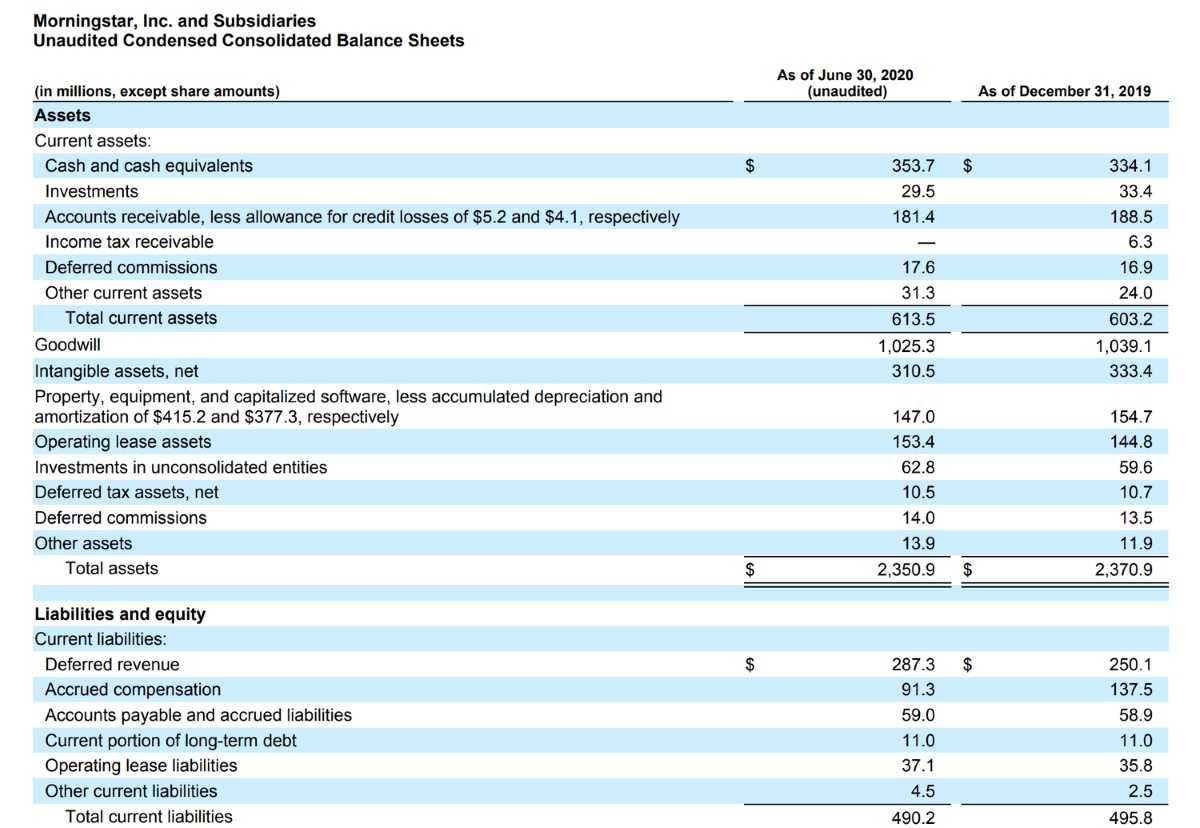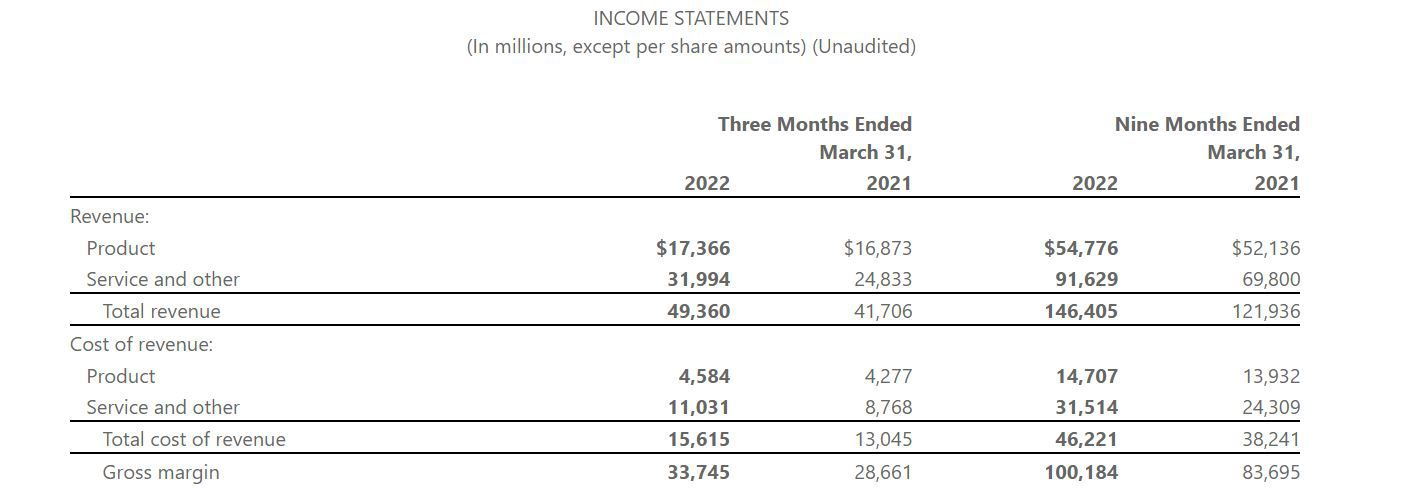

Finance
What Is Service Revenue On A Balance Sheet
Published: December 27, 2023
Learn about service revenue on a balance sheet and its significance in finance. Gain insight into how it contributes to a company's financial health and success.
(Many of the links in this article redirect to a specific reviewed product. Your purchase of these products through affiliate links helps to generate commission for LiveWell, at no extra cost. Learn more)
Table of Contents
Introduction
In the realm of finance, it is crucial to have a clear understanding of the various components that make up a balance sheet. One significant element that holds immense importance is service revenue. Service revenue refers to the income generated by a company through the provision of services to its clients or customers.
Unlike product sales revenue, which is derived from the sale of physical goods, service revenue is earned by companies that specialize in offering intangible services. This can include a wide range of services such as consulting, legal advice, software development, marketing, and more. Regardless of the nature of the service, when a company provides a service to a client and receives compensation in return, it records service revenue on its balance sheet.
The inclusion of service revenue on a balance sheet is vital as it serves as a measure of a company’s performance and its ability to generate income through the services rendered. By analyzing the trends in service revenue over time, investors and analysts can gain valuable insights into the financial health and growth potential of a company.
Throughout this article, we will delve deeper into the definition of service revenue, its components, how it is recognized, accounting considerations, and its significance on a balance sheet. By gaining a comprehensive understanding of service revenue, you will be equipped with the knowledge to evaluate a company’s financial position and make informed decisions.
Definition of Service Revenue
Service revenue, also referred to as service sales or service income, is the amount of money earned by a company through the provision of services to its clients or customers. It represents the revenue generated from activities that do not involve the sale of tangible products, but rather, the delivery of intangible services.
Services can encompass a wide range of industries and professions, including consulting services, legal services, healthcare services, advertising services, and more. When a company provides these types of services to its customers, it earns service revenue in exchange for the value it delivers.
It is important to differentiate service revenue from other forms of revenue, such as product sales revenue. While product sales revenue is derived from the sale of physical goods, service revenue primarily stems from the performance of specific tasks, offering expertise, or delivering tangible results to clients or customers.
Service revenue is recognized when the services have been fully provided or completed, and there is evidence of the amount receivable for the services rendered. This can be in the form of contracts, invoices, or other documented agreements. The revenue is then recorded in the company’s financial statements, specifically on the income statement, and may contribute to the company’s overall profitability.
Service revenue is a vital component of a company’s financial performance, as it reflects its ability to generate income through its core service offerings. Additionally, service revenue can be an indicator of a company’s growth potential, market demand for its services, and its competitive position in the industry.
By accurately tracking and analyzing service revenue, companies can gain insights into the success of their service-based business models and make strategic decisions to optimize their operations and maximize their profitability.
Components of Service Revenue
Service revenue is comprised of various components that contribute to the overall income generated by a company through the provision of services. These components can vary depending on the nature of the services offered and the business model of the company. Here are some key components that make up service revenue:
- Service Fees: This is the primary component of service revenue and refers to the fees charged by the company for the services rendered. These fees are typically based on factors such as the complexity of the service, the time and resources invested, and the market demand for the service. Service fees can be charged on an hourly basis, a project basis, or through subscription models.
- Consulting Services: Many companies generate service revenue through consulting services. This involves providing expert advice and guidance to clients on specific areas such as business strategy, finance, marketing, technology, and more. Consulting services are often priced based on the expertise and experience of the consultants, as well as the value provided to the client.
- Professional Services: Professional services refer to services provided by specialized professionals such as lawyers, accountants, architects, and healthcare professionals. These services often involve specific expertise and qualifications, and the associated fees contribute to the overall service revenue of the company.
- Support Services: Many companies offer support services to their clients, which can include technical support, customer service, troubleshooting, and maintenance. These services are typically provided after the initial sale of a product and can be charged as a separate service fee or bundled with the product price.
- Training and Education: Companies that offer training programs and educational courses can generate service revenue through fees charged for these services. This can include corporate training, professional certifications, online courses, workshops, and seminars.
These are just a few examples of the components that contribute to service revenue. The specific components may vary depending on the industry, market, and the unique offerings of the company. It is essential for companies to accurately track and analyze the various components of their service revenue to understand the dynamics of their income streams and make informed business decisions.
Recognition of Service Revenue
The recognition of service revenue involves determining the appropriate timing for recording revenue in a company’s financial statements. The general principle is that service revenue should be recognized when it is both earned and measurable.
In order to recognize service revenue, the following criteria must be met:
- Performance Obligation: The company must have a contractual obligation to perform a service for a client or customer. This can be defined in a formal contract or agreement that outlines the scope of the service, deliverables, and terms of payment.
- Service Completion: The company must have completed the performance obligation by delivering the service or providing the agreed-upon deliverables. This signifies that the company has fulfilled its obligation and is entitled to receive compensation for the service.
- Measurability: The amount of revenue earned from the service must be measurable. This means that the company should have a reliable estimate of the revenue to be received, either through a fixed fee, a predetermined rate, or an agreed-upon calculation method.
- Collectability: It must be probable that the company will collect the revenue associated with the service. This is based on the creditworthiness of the client or customer and their ability to fulfill their payment obligations.
Once these criteria are met, the service revenue can be recognized in the company’s financial statements. It is typically recorded on the income statement as revenue and may be categorized under a specific line item, such as “Service Revenue” or “Sales of Services”.
It’s important to note that the recognition of service revenue may vary depending on the accounting framework used by the company. The two main frameworks are the accrual basis of accounting, which recognizes revenue when it is earned, and the cash basis of accounting, which recognizes revenue when it is received. Most companies follow the accrual basis, where service revenue is recognized when the performance obligation is satisfied, regardless of when payment is received from the customer.
Proper recognition of service revenue is essential for financial reporting accuracy and compliance. It allows for transparency in a company’s financial statements and provides stakeholders with useful information to evaluate the company’s performance and financial stability.
Examples of Service Revenue
Service revenue encompasses a wide range of industries and businesses. Here are some examples of the types of services that can generate service revenue:
- Consulting Services: Management consulting firms provide strategic advice and guidance to organizations to improve their performance, solve problems, and achieve their goals. They charge service fees based on the scope of the consulting project and the expertise of their consultants.
- Legal Services: Law firms provide a variety of legal services, including contract drafting, litigation representation, and legal advice. They bill their clients based on the hours worked or on a fixed fee basis, depending on the nature of the service.
- IT Services: Technology companies offer IT services such as software development, system integration, network management, and technical support. These services are usually priced based on the complexity of the project, the duration of the engagement, and the level of expertise required.
- Advertising and Marketing Services: Advertising agencies provide services related to brand development, advertising campaigns, market research, and digital marketing. They charge their clients based on a combination of factors, such as the scope of work, media spend, and performance-based incentives.
- Healthcare Services: Hospitals, clinics, and healthcare providers offer a range of medical services, including consultations, surgeries, diagnostic tests, and treatments. These services are billed based on rates set by healthcare regulatory bodies or negotiated with insurance providers.
- Educational Services: Universities, schools, and training institutes generate service revenue by offering educational programs, courses, and workshops. They charge tuition fees, registration fees, and other charges associated with the delivery of educational services.
- Financial Services: Banks, investment firms, and financial advisors provide a variety of financial services, including banking services, investment management, retirement planning, and wealth management. They earn service revenue through fees charged for these services, which can be based on a percentage of assets under management or a fixed fee.
These are just a few examples of the diverse range of services that can generate service revenue. Service revenue is an essential component of many businesses that offer intangible services, and its proper management and recognition are crucial for financial success.
Accounting for Service Revenue
Accounting for service revenue involves the proper recording and reporting of the income earned through the provision of services. This process ensures accuracy and compliance with accounting standards. Here are some important aspects to consider when accounting for service revenue:
- Revenue Recognition: As mentioned earlier, service revenue should be recognized when it is earned and measurable. This typically occurs when the company fulfills its performance obligation and there is evidence of an agreement with the customer, such as a contract or invoice.
- Accrual Basis Accounting: Most companies use the accrual basis of accounting, which recognizes revenue when it is earned, rather than when cash is received. This means that even if payment for the services is yet to be received, the revenue is still recognized if the criteria for revenue recognition are met.
- Journal Entries: To record service revenue, a company will typically make a journal entry that debits the accounts receivable or cash account and credits the service revenue or sales account.
- Revenue Recognition Methods: Companies may employ different revenue recognition methods, such as the completed service method or the percentage of completion method. The method used will depend on the specific circumstances and industry practices.
- Allowance for Doubtful Accounts: Since service revenue is often recorded on credit terms, there is a risk of non-payment. Companies may need to establish an allowance for doubtful accounts to account for potential losses from uncollectible accounts receivable.
- Reporting and Disclosure: Service revenue is reported on the income statement as revenue or sales. Additionally, companies may provide detailed disclosures in the notes to the financial statements to provide further information on the nature of the services rendered and the associated revenue.
- Internal Controls: It is crucial for companies to establish strong internal controls to ensure the accuracy and reliability of service revenue recognition. This includes segregation of duties, review procedures, and adherence to accounting policies.
Accounting for service revenue requires careful attention to detail and adherence to accounting principles. By accurately recording and reporting service revenue, companies can provide transparency in their financial statements, facilitate decision-making, and maintain compliance with relevant accounting standards.
Importance of Service Revenue on a Balance Sheet
Service revenue plays a vital role on a company’s balance sheet as it provides valuable insights into its financial performance and stability. Here are some key reasons why service revenue is important:
- Measurement of Financial Performance: Service revenue is a key indicator of a company’s ability to generate income through its core operations. By analyzing the trends in service revenue over time, investors, shareholders, and analysts can assess the company’s financial performance and growth potential. Higher service revenue indicates increased demand for the company’s services and reflects positive business operations.
- Diversification of Income Streams: Companies that generate significant service revenue demonstrate a diversification of income streams, reducing their reliance on a single product or market. This diversification can provide stability and mitigate risks associated with fluctuations in product sales or market conditions.
- Assessment of Growth Potential: Service revenue growth can be an indicator of a company’s growth potential. Increasing service revenue suggests an expanding customer base and market share. It indicates that the company’s services are in demand and competitive in the market. This information is important for investors and stakeholders who are interested in the company’s growth prospects.
- Evaluation of Profitability: Service revenue contributes to a company’s overall profitability. By analyzing the profit margin on service revenue, investors and financial analysts can assess the company’s ability to generate profit through its service offerings. It provides insights into the effectiveness of cost management and pricing strategies.
- Valuation of the Company: Service revenue is a crucial factor in determining the value of a company. When evaluating a company for potential merger or acquisition, investors often consider its service revenue as a key determinant of its worth. Higher service revenue can enhance the company’s valuation, making it more attractive to potential buyers or investors.
- Comparison with Peers: Service revenue enables investors and analysts to compare the financial performance of a company with its industry peers. This comparison can provide insights into how the company is performing relative to its competitors. It can highlight strengths, weaknesses, and competitive advantages that can impact investment decisions and market positioning.
Overall, service revenue is a vital component of a company’s balance sheet as it contributes to the assessment of financial performance, growth potential, and profitability. By analyzing service revenue metrics, stakeholders can make informed decisions and gain a deeper understanding of the company’s financial health and future prospects.
Conclusion
Service revenue is a critical aspect of a company’s financial landscape, representing the income generated through the provision of intangible services. It serves as a key measure of a company’s performance, growth potential, and overall financial stability.
In this article, we explored the definition of service revenue and its components, including service fees, consulting services, professional services, support services, and training and education. We discussed the importance of proper recognition of service revenue, following the criteria of performance obligation, service completion, measurability, and collectability.
Accounting for service revenue involves understanding the principles of recognizing revenue, utilizing accrual basis accounting, creating appropriate journal entries, and establishing internal controls to ensure accuracy and compliance. The recording and reporting of service revenue provide transparency in financial statements and facilitate decision-making for investors, stakeholders, and analysts.
Service revenue holds significance on a company’s balance sheet as it helps assess financial performance, measure growth potential, evaluate profitability, and determine the value of the company. It allows for comparisons with industry peers and provides insights into the company’s competitive position.
In conclusion, service revenue is not only a measure of financial success but also a reflection of a company’s ability to meet customer needs, adapt to market demands, and deliver value through intangible services. By understanding and evaluating service revenue, businesses can make informed decisions, optimize their operations, and strive for sustainable growth.














